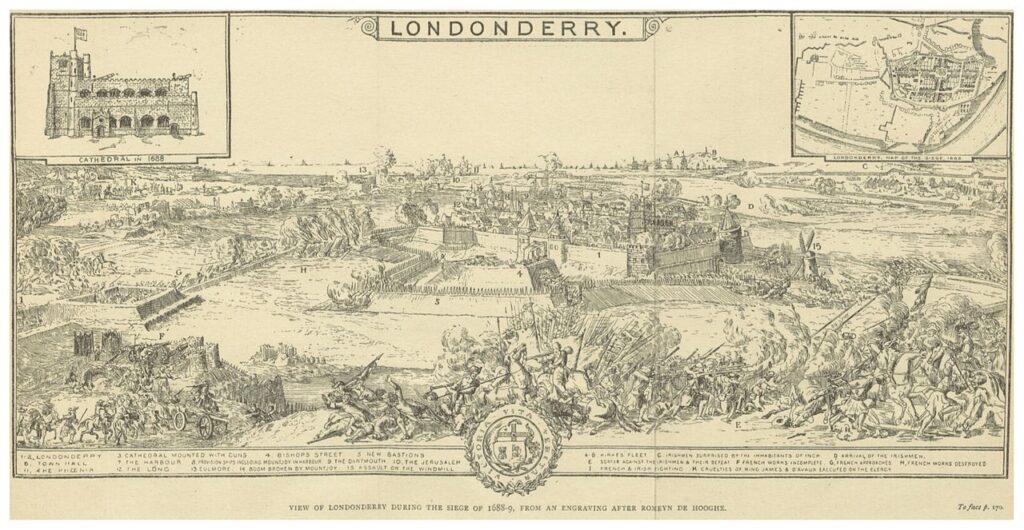The Siege of Derry
The events of Siege of Derry start with the so-called Glorious Revolution in 1689, during which James II, the Catholic king of England, was overthrown by his daughter and her Protestant husband William III of Orange. In order to retrieve his throne, James fled to France and then Ireland with an intention to find and mobilise his supporters.
Although most of Ireland’s population was devoted to James II, cities which have undergone the The Plantation of Ulster, mainly Enniskillen and Derry, remained Protestant and therefore opposed the fallen king. As Tyrconell, who was the Irish representative of James II, approached Derry, thirteen members of Apprentice Boys, a protestant society within the walls, seized the keys of the city and closed the gates. This event is believed to mark the beginning of the siege and one of the first greater clashes of the Williamite war.

In an effort to regain control of the city, Tyrconell and James II decided to begin the attack and establish a boom on the River Foyle. Many of the authorities and governor of Derry, Colonel Robert Lundy, were against partaking in the clash and called for a surrender. After meeting with disapproval of citizens, he and many others fled the city at night, leaving the defence matters to Major George Walker and his associates. Beyond that point the slogan No surrender was used until the end of the siege.
The battles lasted 105 days, during which bombardments and fires happened frequently. Nearing the end of the siege famine and diseases started spreading among both the defenders of the town and aggressors. Eventually, on 28th of July 1689 the relief fleet sent by Protestant allies broke the barricade on the River Foyle allowing for the supplies to be delivered to the besieged. Being able to neither starve the city nor take control over it using force, Catholic leaders decided to retreat. The battle was over and the defenders could cherish their victory.

To this day, in order to memorialise the events of the 17th century clash, the Shutting-of-the-Gates Parade and the Relief-of-Derry Parade annually march through the streets of Derry. The history of the Siege itself is also explained in detail in Derry’s Tower Museum and The Siege Museum.